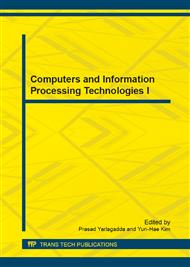p.232
p.237
p.241
p.245
p.252
p.258
p.262
p.267
p.273
Short-Term Prediction of Ship Motion Based on EMD-SVM
Abstract:
Ship sailing at sea is affected by many factors, such as winds, waves and so on, which makes six degrees of freedom motions and thus influences the shipboard arms control, aircraft landing and other operations. In view of the non-linear and non-stationary features of ship motion in waves, a new method based on EMD (Empirical Model Decomposition) and SVM (Support Vector Machine) is presented to predict the ship motion. The EMD is used to decompose the ship motion time series data into several IMFs (intrinsic mode functions) and a residual trend term, which decreases the difficulty of prediction. As the IMF is relatively stationary, but also non-linear, these features are fit to be processed by using SVM. Then the decompositions are used as inputs into SVM to forecast ship motion. The simulation and comparison analysis show that the EMD-SVM prediction model can effectively forecast the ship motion in waves.
Info:
Periodical:
Pages:
252-257
Citation:
Online since:
June 2014
Authors:
Price:
Сopyright:
© 2014 Trans Tech Publications Ltd. All Rights Reserved
Share:
Citation:


